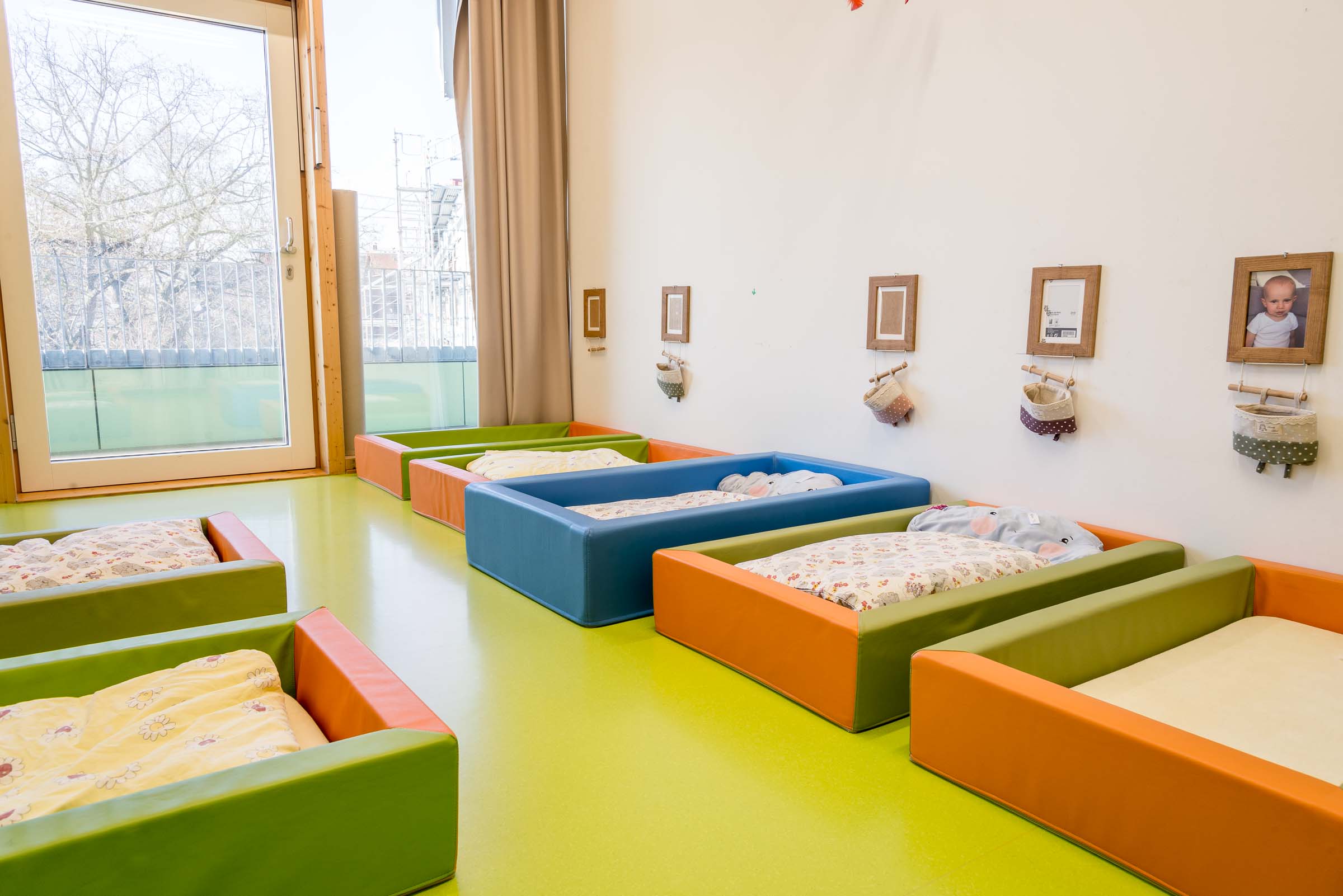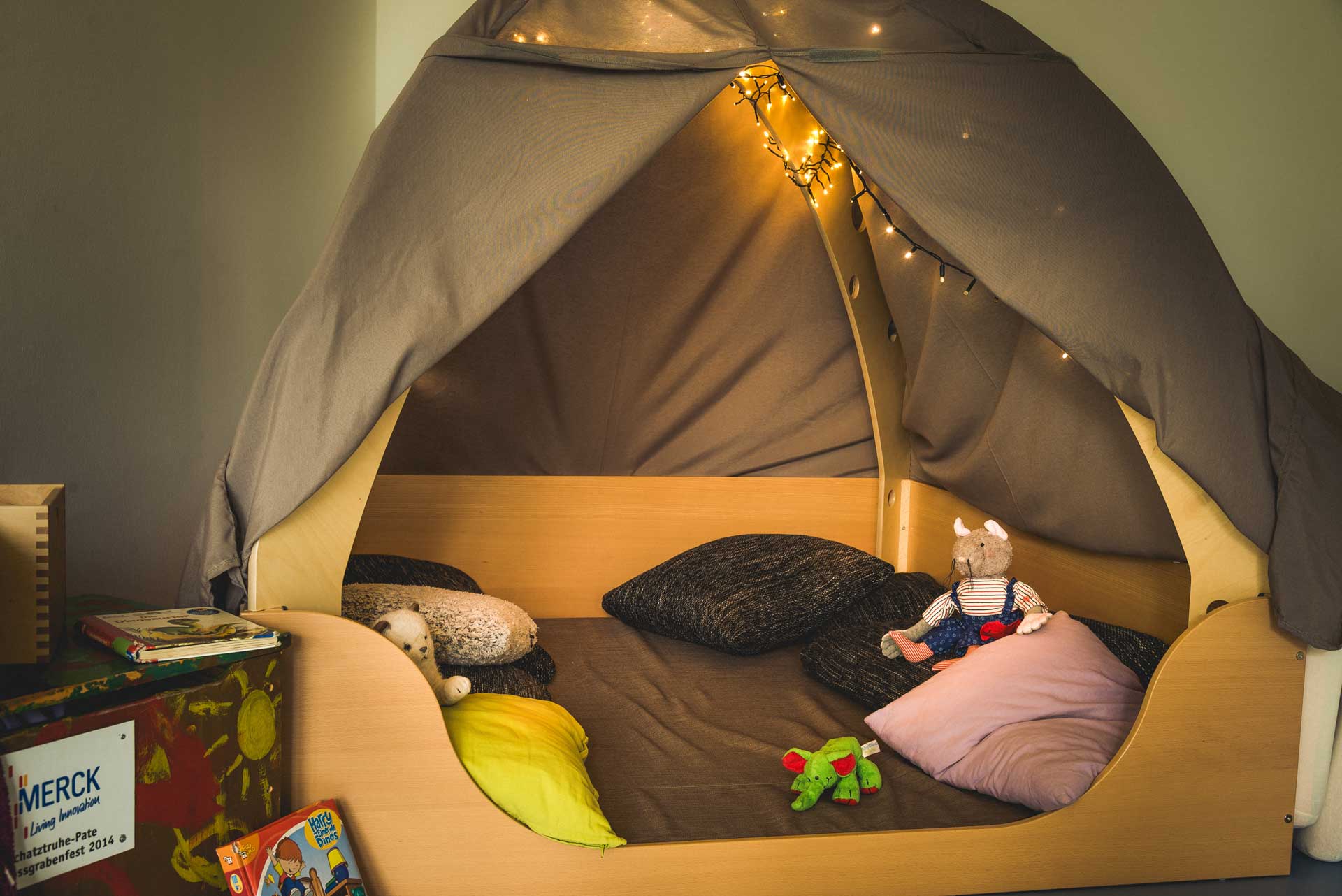Acclimatization
In the nursery school, the acclimatization process is individually tailored to children and their families.
In the crèche, acclimatization is based on the Berlin acclimatization concept. As a rule, a period of two (to three) weeks is required.
The phases in the crèche are structured as follows and are always geared to the children and their families:
Phase 1:
Three-day basic phase: The child stays in the facility with the caregiver (e.g. parent) for an individualized amount of time (up to 1.5 hours). There are no attempts at separation. The primary teacher (teaching specialist) carefully establishes contact with the child through play activities.
Phase 2:
First attempts at separation take place. The caregiver (e.g. parent) leaves the group room after saying goodbye to the child. Depending on the child's reaction, the separation lasts from a few minutes to a maximum of half an hour. During this time, the caregiver (e.g. parent) stays out of the child’s sight but remains inside the facility.
Phase 3:
Stabilization phase: Repetition of separations and extension of the time periods. The teaching specialist increasingly takes over the care of the child. Depending on the child's reaction and behavior in response to the separation, the acclimatization period usually lasts two weeks (occasionally up to three weeks).
(Cf. Braukhane, Katja and Knobeloch, Janina (2011): The Berlin acclimatization model – Theoretical foundations and practical implementation. Available at https://www.kita-fachtexte.de/fileadmin/Redaktion/Publikationen/KiTaFT_Braukhane_Knobeloch_2011.pdf. Accessed March 28, 2022)


